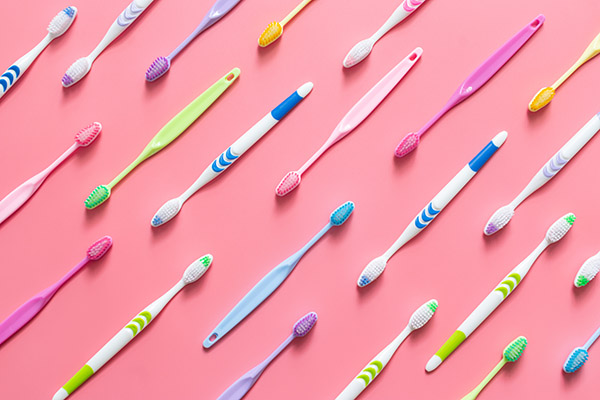Cosmetic Dentistry Options for Damaged Tooth Restoration

Most people will need cosmetic dentistry restorations to repair damage to one or more teeth at some point in their lives. Your teeth are the strongest part of your body, and they are designed to withstand acid attacks and tremendous bite forces.
However, consistently being exposed to these things can damage teeth. They can also be damaged by trauma caused by blows to the face, falls, or accidents.
All damage to teeth requires cosmetic dentistry, regardless of how minor it appears. Cosmetic treatments aim to improve the appearance of teeth, but they can also provide restorative benefits. Teeth are protected by an outer layer called enamel, and that is the first part that comes off when a tooth is damaged. This leaves the more delicate dentin exposed to acids in the mouth, which it is not designed to withstand, making teeth more vulnerable to decay. Restorative treatments typically restore damaged enamel with dental restorations, helping to keep what is left of the tooth intact.
Cosmetic dentistry solutions for damaged teeth
Here are a few of the ways that a cosmetic dentist might go about repairing damaged teeth.
1. Composite bonding
This is one of the most versatile cosmetic treatments used in dentistry. It can be used to repair issues like tooth decay, chips, and minor breaks. It is also one of the most affordable restorative treatments performed by dentists.
Restoring teeth with composite bonding usually involves directly applying composite resin to the tooth being treated. In some cases, the composite might be used to create a restoration in a lab before being cemented on the patient’s tooth. Restorations made with composite bonding have ideal aesthetics because these composites can be color-matched with the rest of the patient’s teeth.
Dental bonding provides a non-invasive way to restore damaged teeth. Anesthetic is typically not needed when teeth are being restored with composite, unless the dentist needs to remove decayed material from the tooth.
The dentist cleans and dries the tooth being treated during the procedure before roughening it up with an etching solution. The tooth is cleaned and dried for a second time before the composite is directly applied. The resin is molded as needed and hardened with ultraviolet light.
2. Dental crowns
Dental crowns are just as versatile when it comes to restoring damaged teeth. Also called caps, these restorations are placed over the visible part of teeth, restoring their appearance and function. They also protect the tooth from acids and other irritants in the mouth.
Getting a crown is a more invasive procedure than making repairs with composite bonding, but it provides a long-lasting solution. Crowns are designed to last up to 25 years, while repairs made with composite bonding only last about six years.
Placing a crown on a tooth starts with a dentist administering a shot of a local anesthetic. This numbs the tooth being worked on so the patient does not feel pain as the dentist removes enamel from its sides. Removing enamel creates a better fit for the crown.
The tooth's impression or digital image is then taken and passed on to a dental lab that makes restorations like crowns. It takes about two weeks for the custom restoration to get back to the dentist.
The patient gets a temporary crown to protect their prepared tooth while waiting for their custom crown. They return for a second appointment when their custom crown is ready, to finish the procedure.
3. Veneers
Veneers are thin shells that go on the front-facing parts of teeth. A veneer's role is to cover up any flaws on the front part of a tooth. Veneers can be used to treat cosmetic issues, like minor chips or discoloration, that primarily affect the front-facing parts of teeth.
Placing a veneer on a patient’s tooth is similar to placing a crown. The procedure starts with the dentist numbing the patient's tooth so enamel can be removed from its front. The quantity of enamel removed is proportional to the thickness of the veneer being used. Shaving enamel off the tooth being treated prevents the veneers from making the patient’s teeth appear abnormally bulky.
An impression of the prepared tooth is sent to a lab where veneers are made. The patient gets a temporary veneer in the meantime. They go back for a second appointment in about two weeks, when their restoration is ready.
We can fix your damaged teeth
Our dentist has the right solution for your teeth, regardless of how damaged they are. Give us a call or stop by our Agoura Hills clinic to set up an appointment.
Request an appointment here: https://agourahillscosmeticdentists.com or call The Smile Spa at 8185732196 for an appointment in our Agoura Hills office.
Check out what others are saying about our services on Yelp: Read our Yelp reviews.
Recent Posts
Everyone learns oral hygiene basics when they are young, but some details get lost over time. For example, many adults are confused about what type of toothbrush to use. This simple tool comes in many different forms, including a variety of sizes and a range of bristle textures. You may wonder why there are so…
A children's dentist can help set your child up for a lifetime of healthy smiles. Taking children to a dentist for preventative treatments that support their oral health is crucial. Checkups, cleanings, fluoride treatments, and dental sealants are among the most important tools a dentist uses to help keep your child's mouth healthy. Good oral care…
Although many people believe that plaque and tartar are the same, they actually have significant differences. Understanding the distinctions between these two dental conditions can help you identify their warning signs and practice oral hygiene basics to avoid them.Plaque is a soft film containing millions of bacteria that build up on your teeth, gums, and…
Keeping up with oral hygiene basics can prevent cavities and other issues with your teeth. Proper daily care can also stop discoloration of the teeth and reduce bad breath. Here are some dental habits that people can benefit from including as part of a daily routine.One of the most important parts of oral hygiene is…


